Vestkystruten 2k24 - Day 1: Embracing Chaos on Gravel & Trains
Day 1 tested our flexibility—crowded trains, brutal heat, and a last-minute route change. Skipping Ribe led to a better plan, and a less-than-ideal shelter still felt like a win. Bikepacking isn’t about perfection; it’s about rolling with the unexpected and finding joy in the ride.
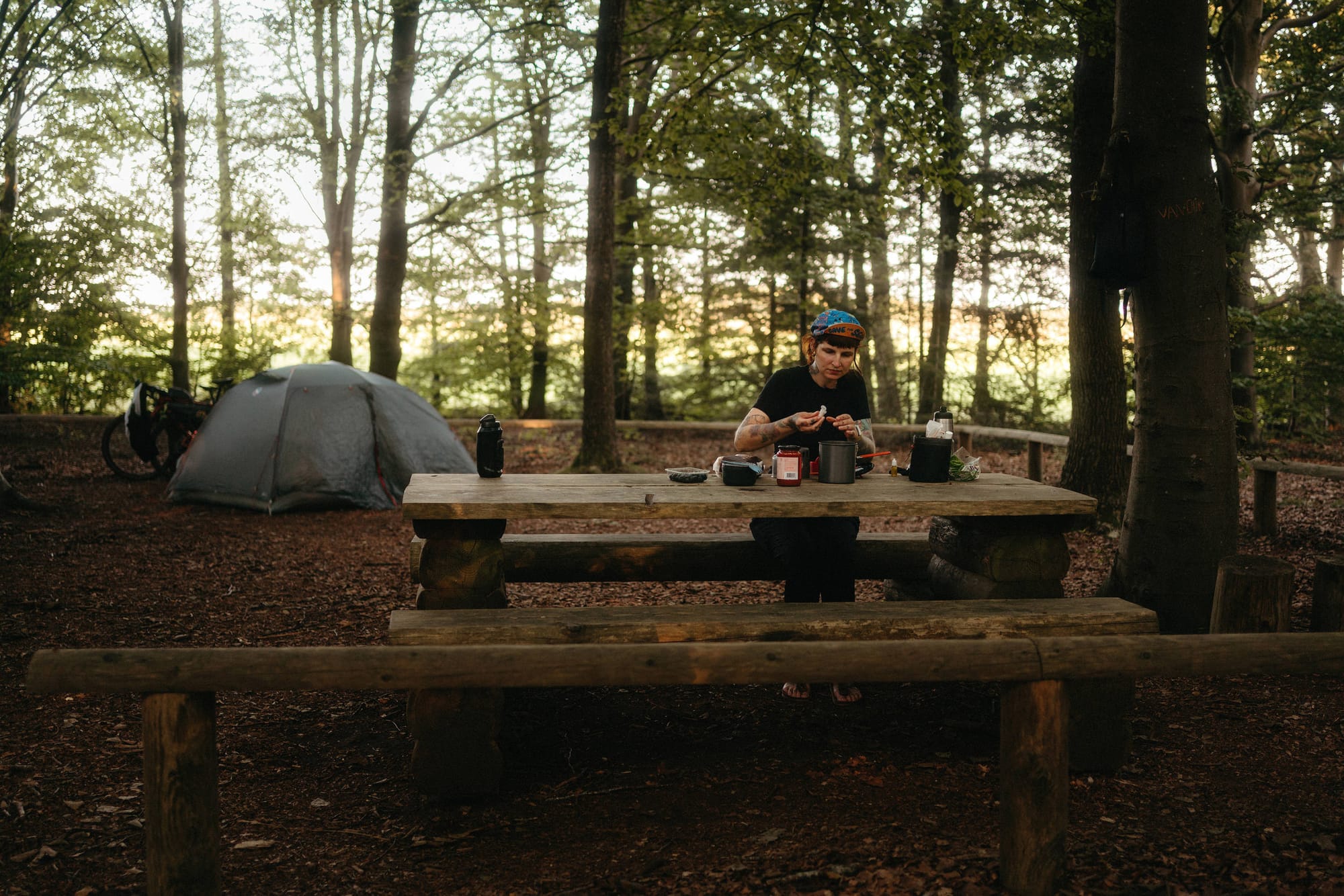
The Journey
Day 1 kicked off at 6:29 a.m. at Altona Bahnhof, right in the middle of peak train chaos. Crowds jostled for space, luggage spilled into the aisles, and, as usual, the designated bike area was crammed with everything except bikes. Why is it that every time, I end up in a mini-battle for space, hoping for some consideration that never comes? After a few deep breaths—and a few elbows—we finally wedged our bikes in and settled down for the ride.

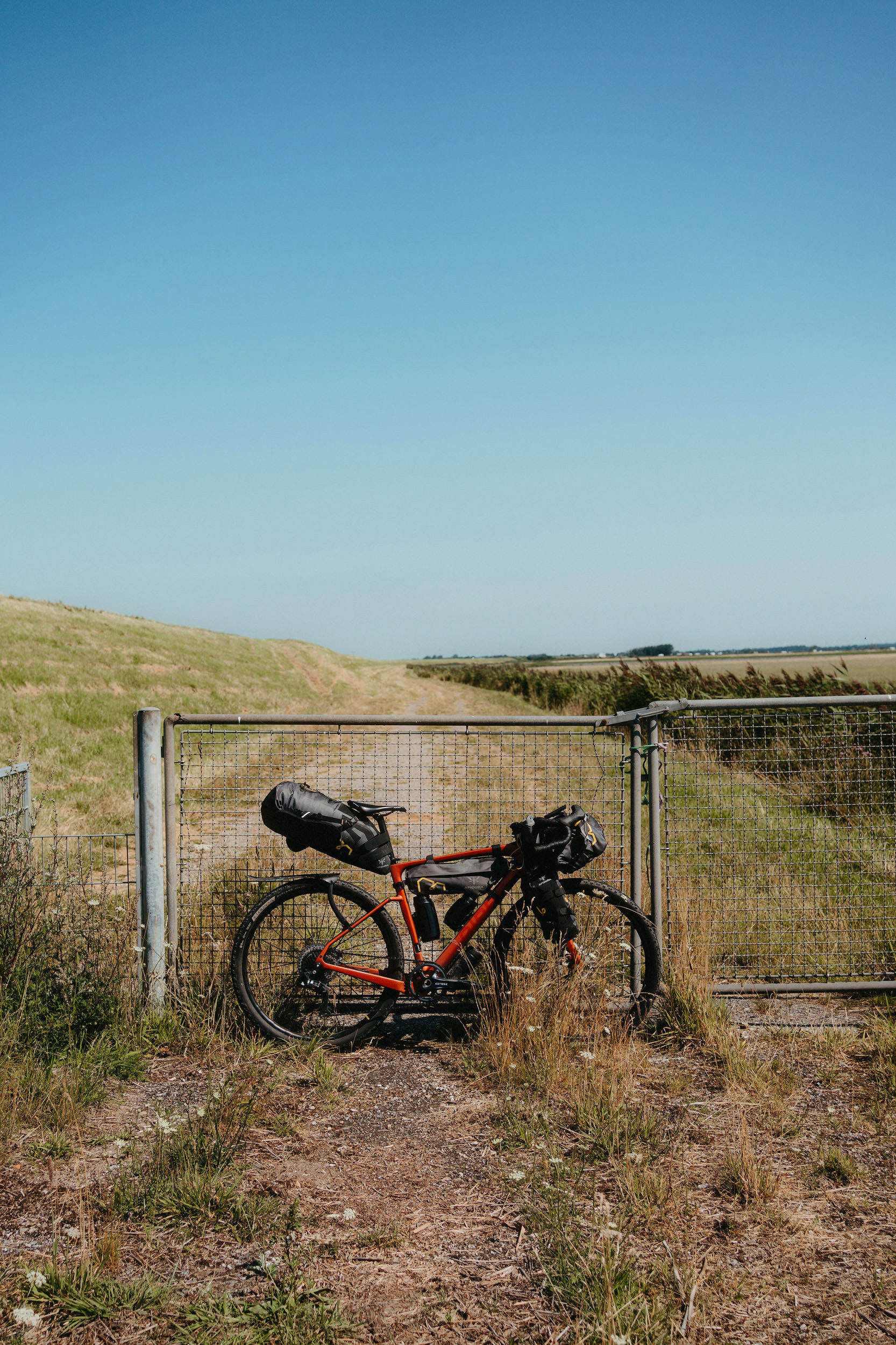
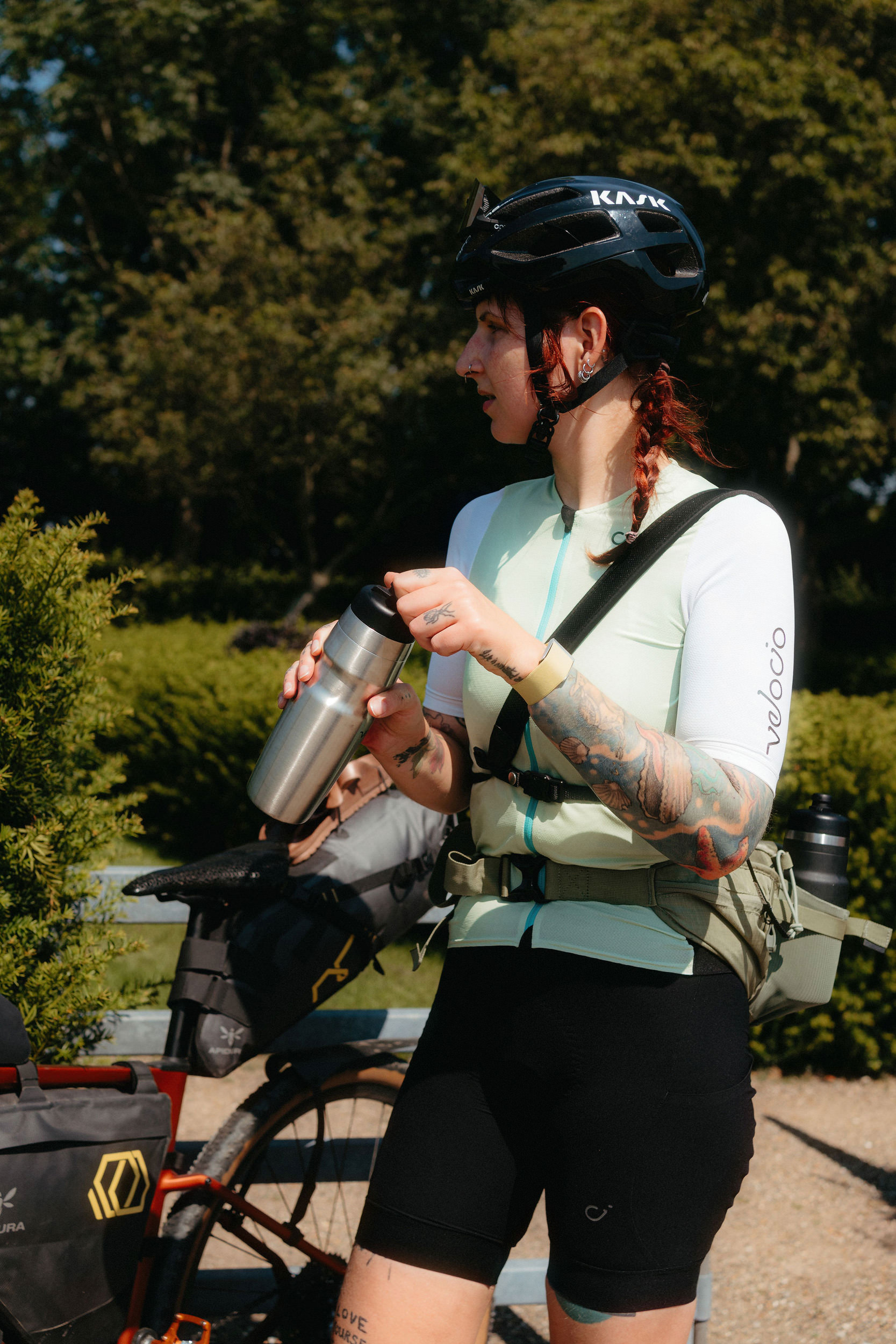
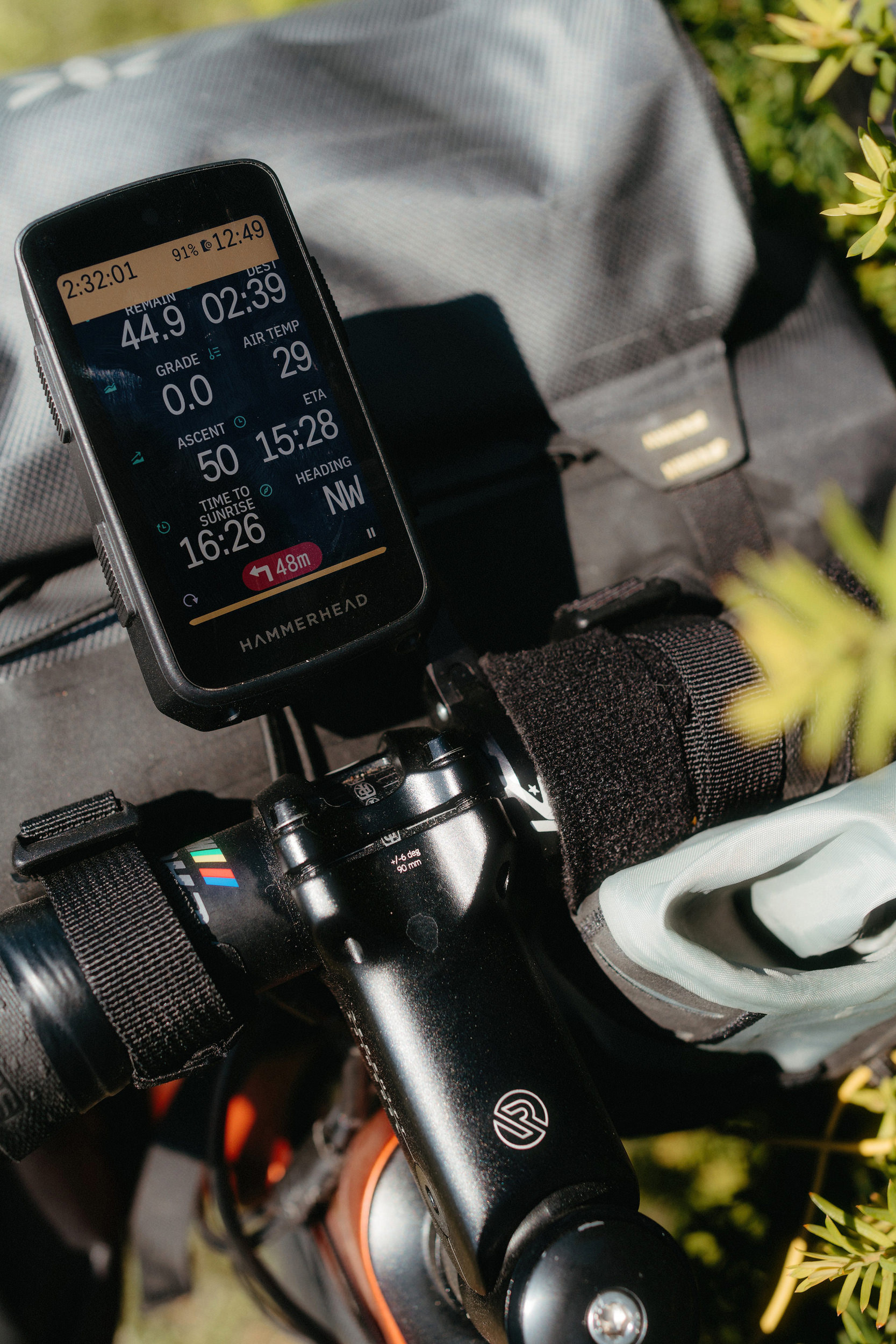
We rolled off the train in Klanxbüll just before 10 a.m., already a bit behind schedule. Breakfast was a defiant act of leftover pizza from the night before, shared on the platform as we braced ourselves for the day ahead. Jana’s energy was dipping, and we both knew that our original plan—riding around 90 kilometers with a detour to Ribe—might need some tweaking. Ribe, Denmark's oldest town, was tempting, but it was Saturday in high season, which meant tourists. Lots of them. Skipping Ribe meant we could push further to Esbjerg and be better positioned for tomorrow. Flexibility is key, right?
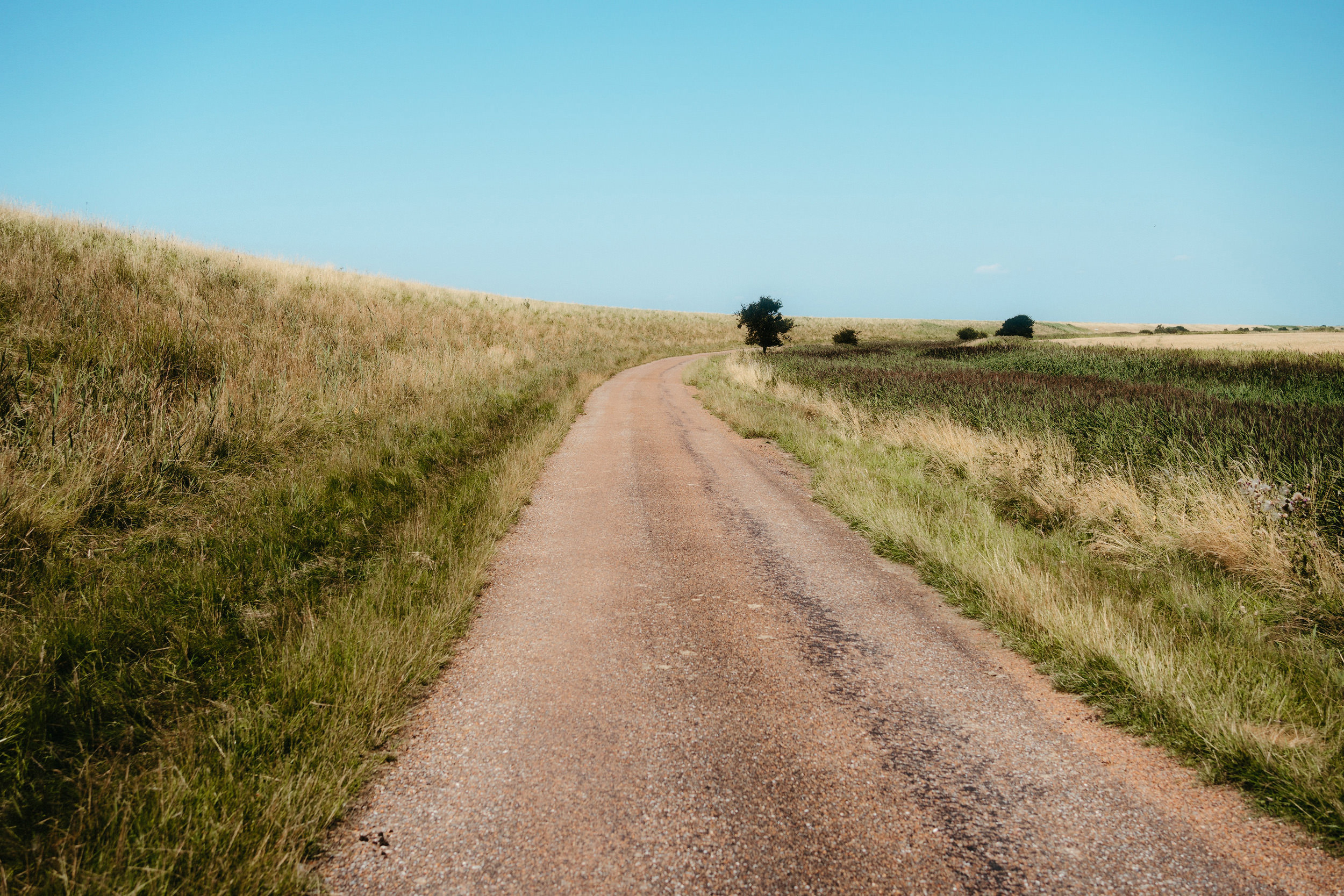
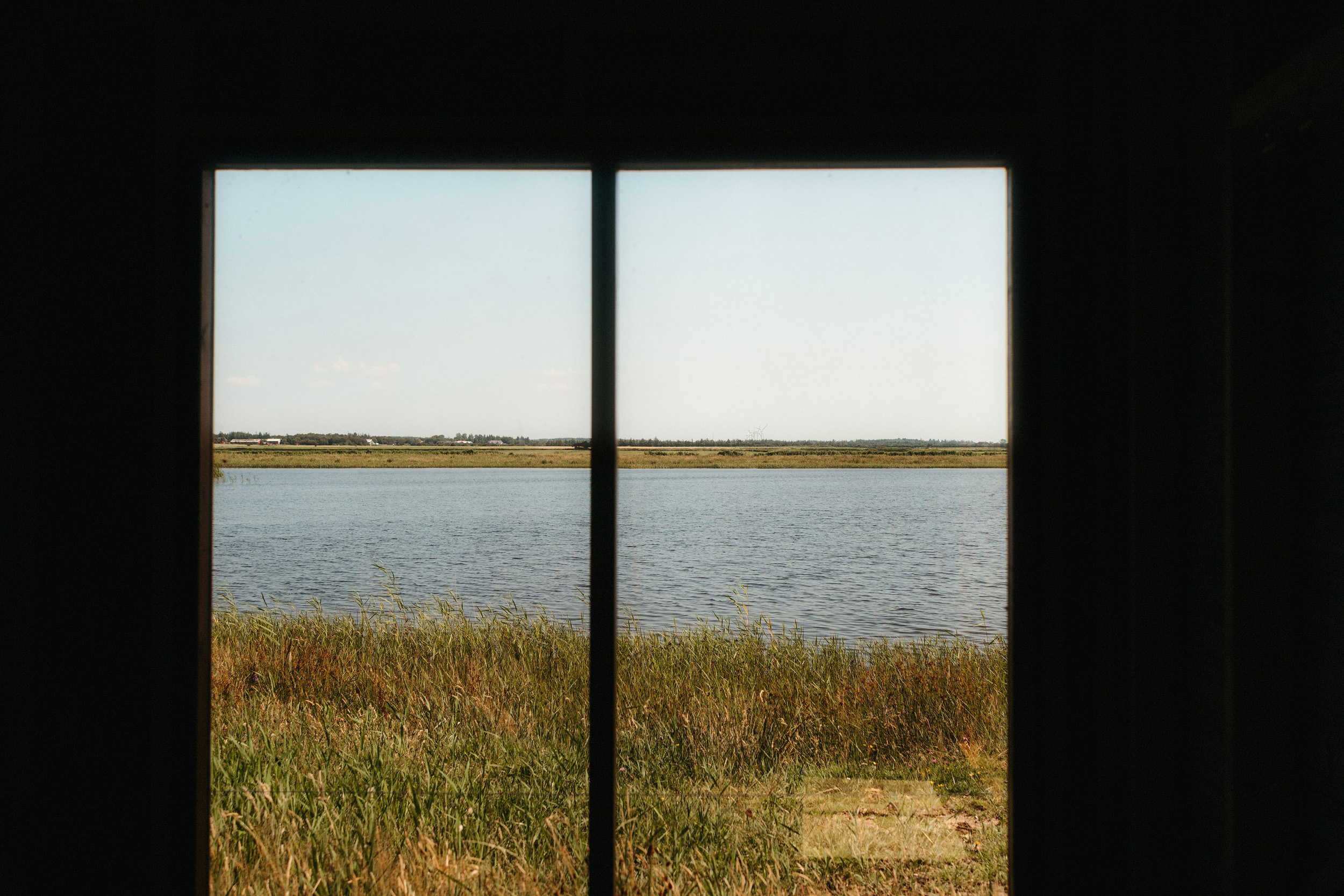
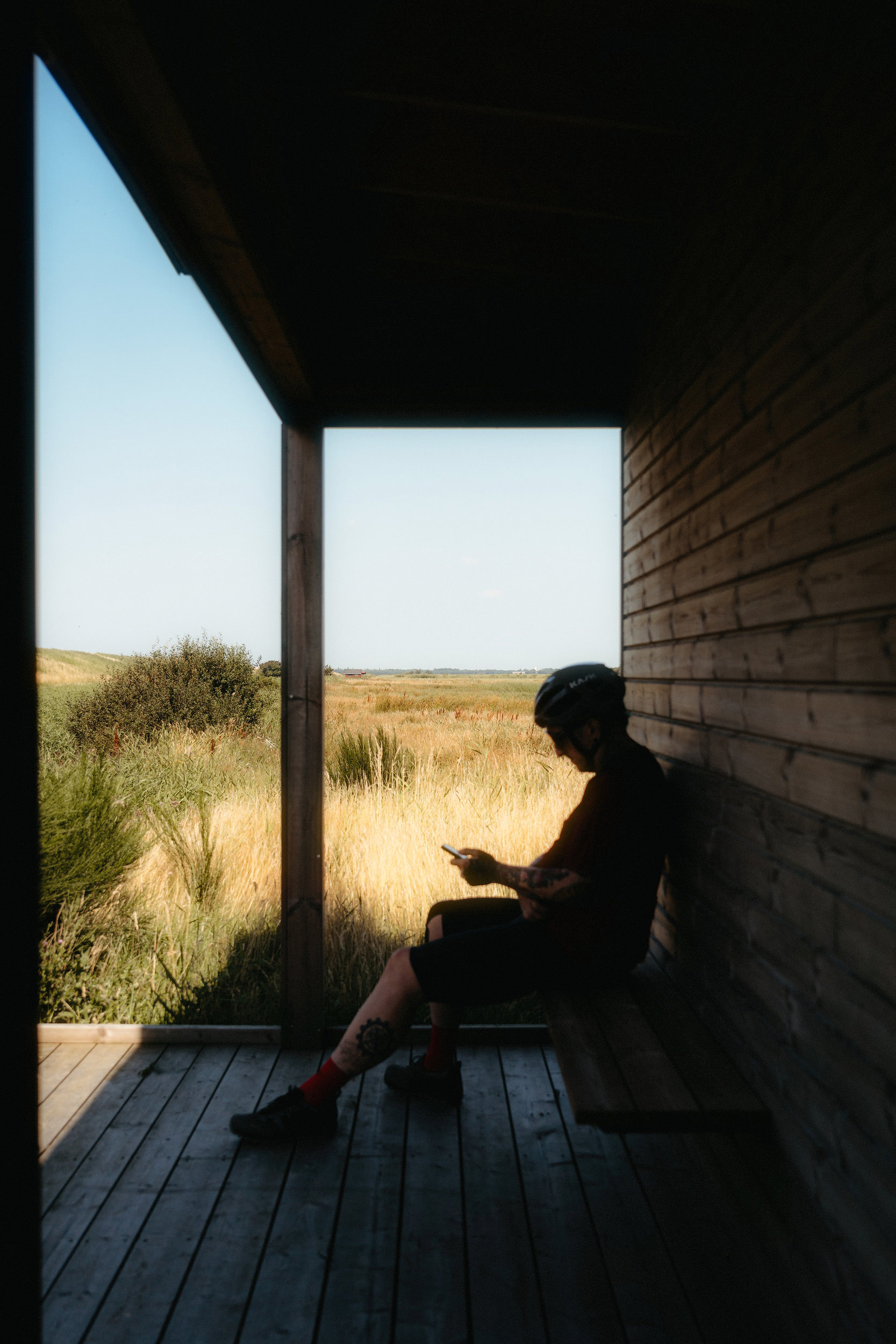
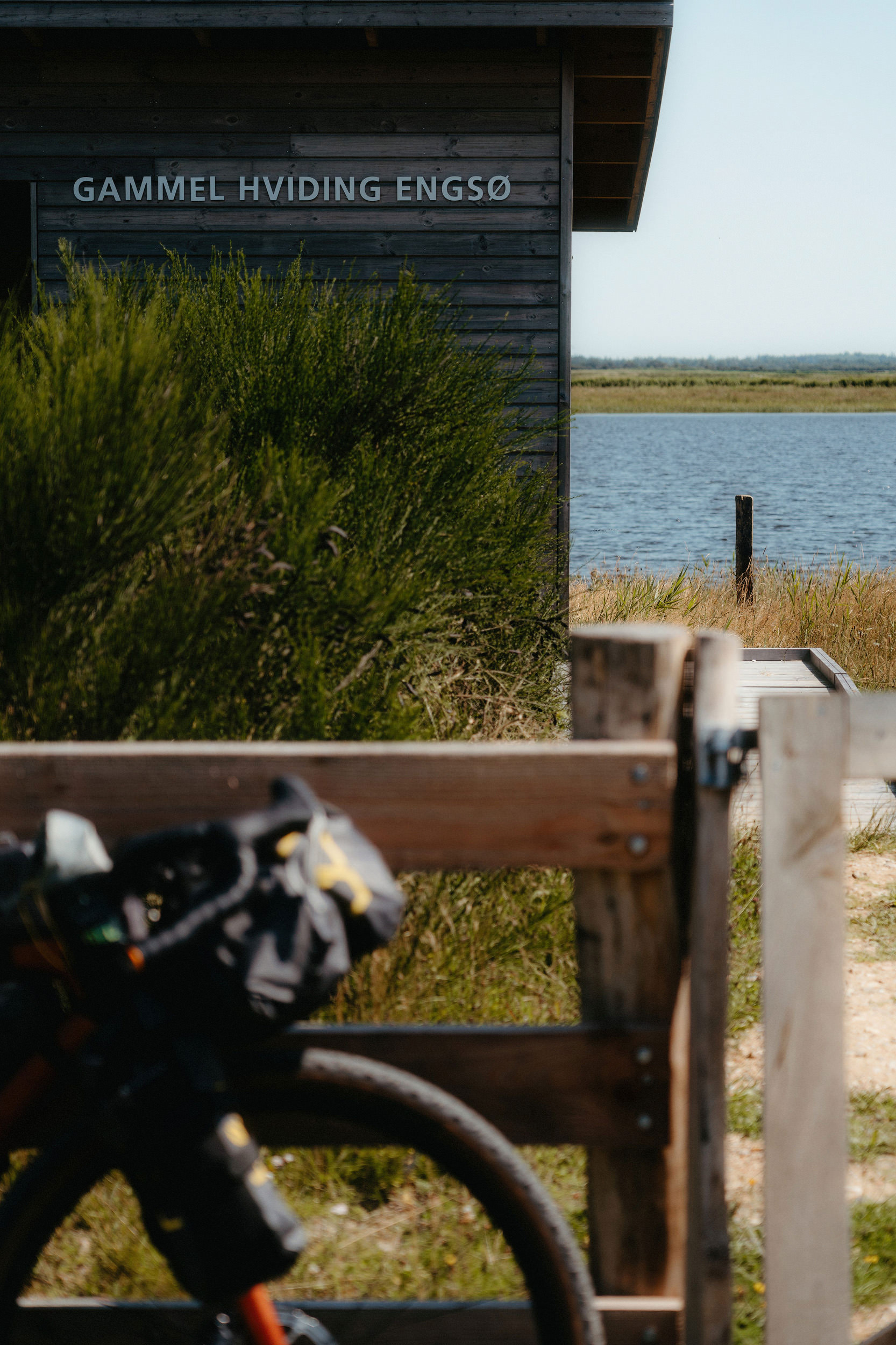
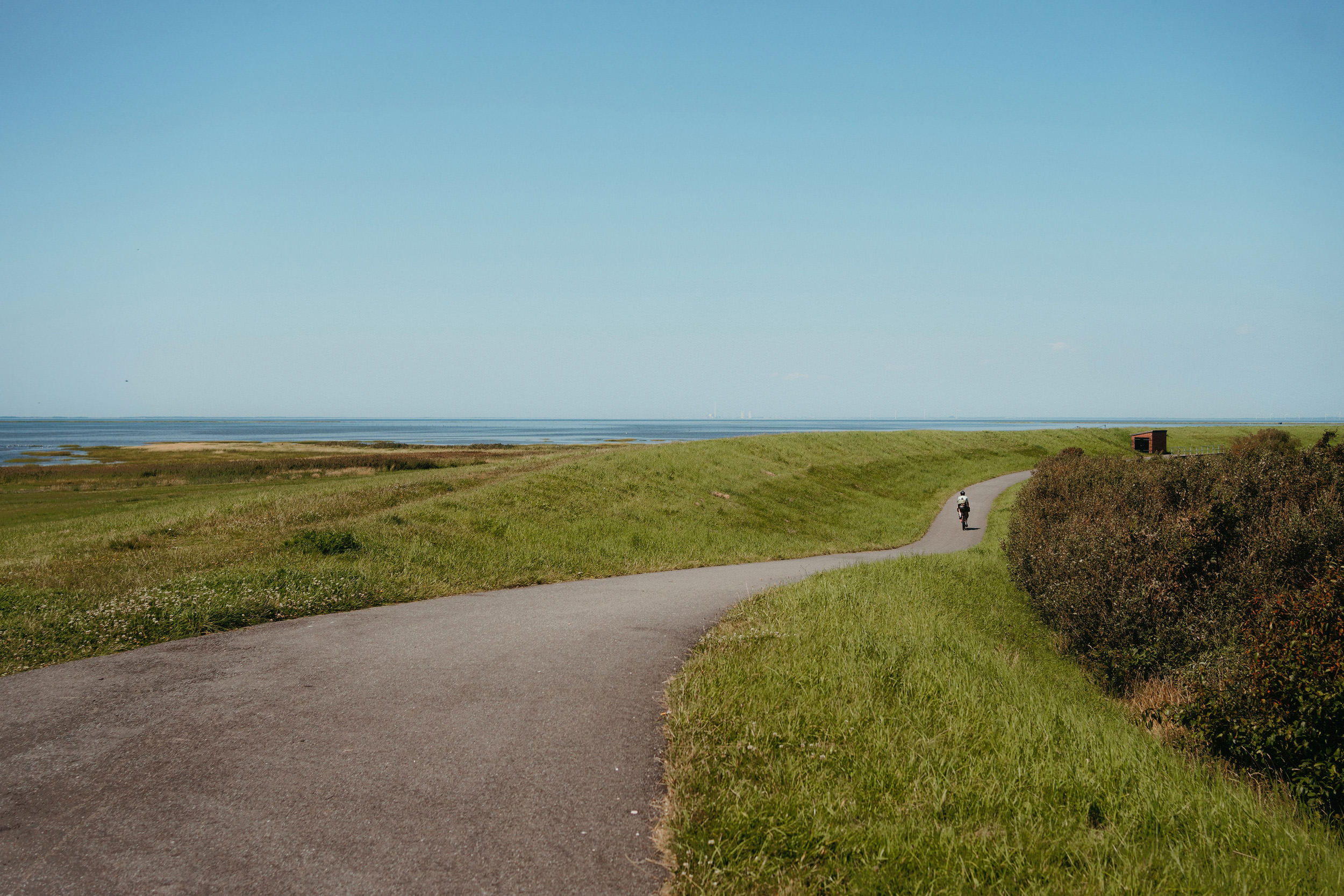
As we pedaled toward Esbjerg, the long roads ahead reminded us that this journey was as much about endurance as exploration. The scenery—fields, sheep, and the occasional glimpse of coastline—was familiar. For someone not from northern Germany, it might have been a visual treat, but for us, it was like riding through a slightly altered version of our own backyard. Still, the act of crossing the border and being out of Germany felt good, even if the sights didn’t exactly scream ‘new adventure.’
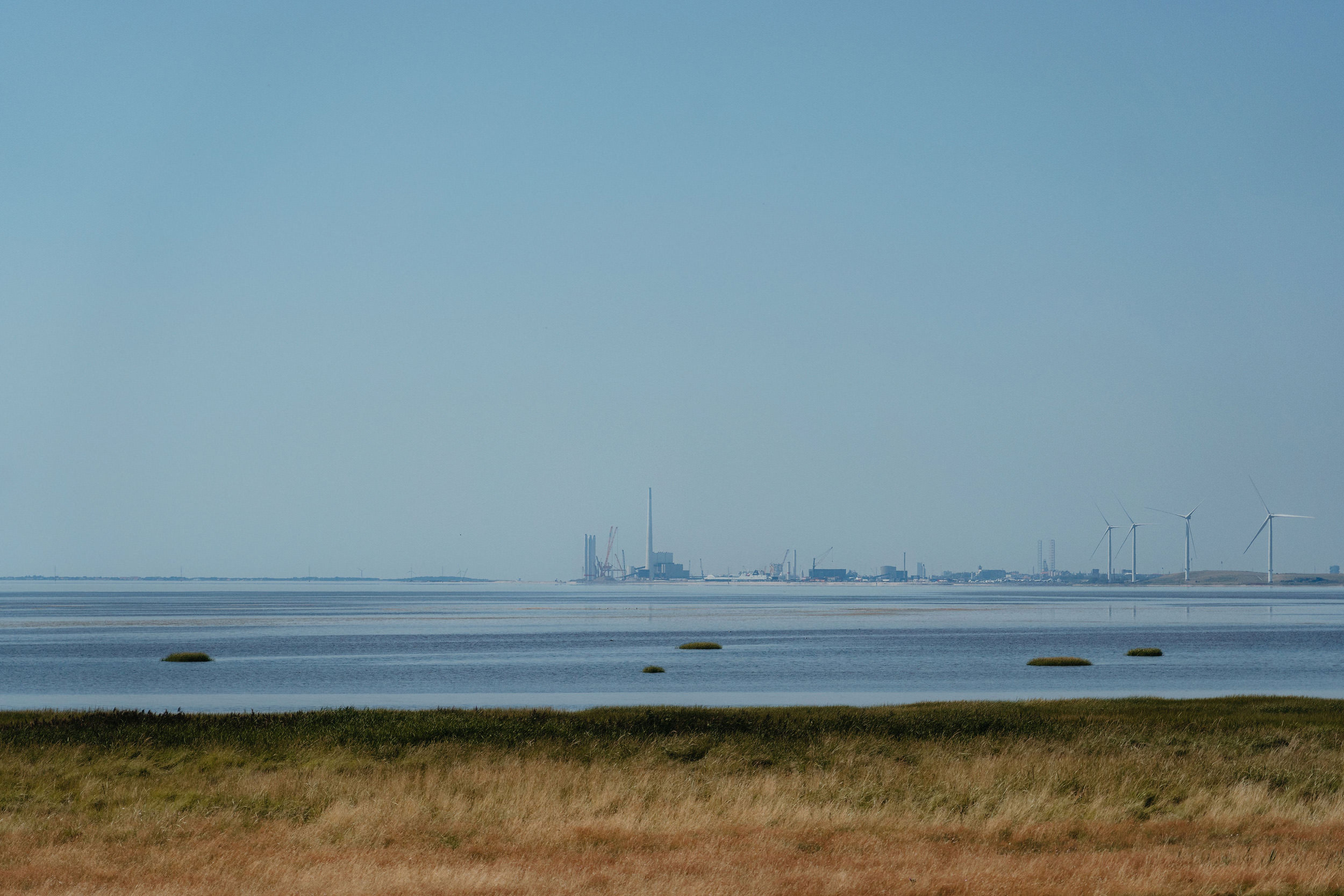
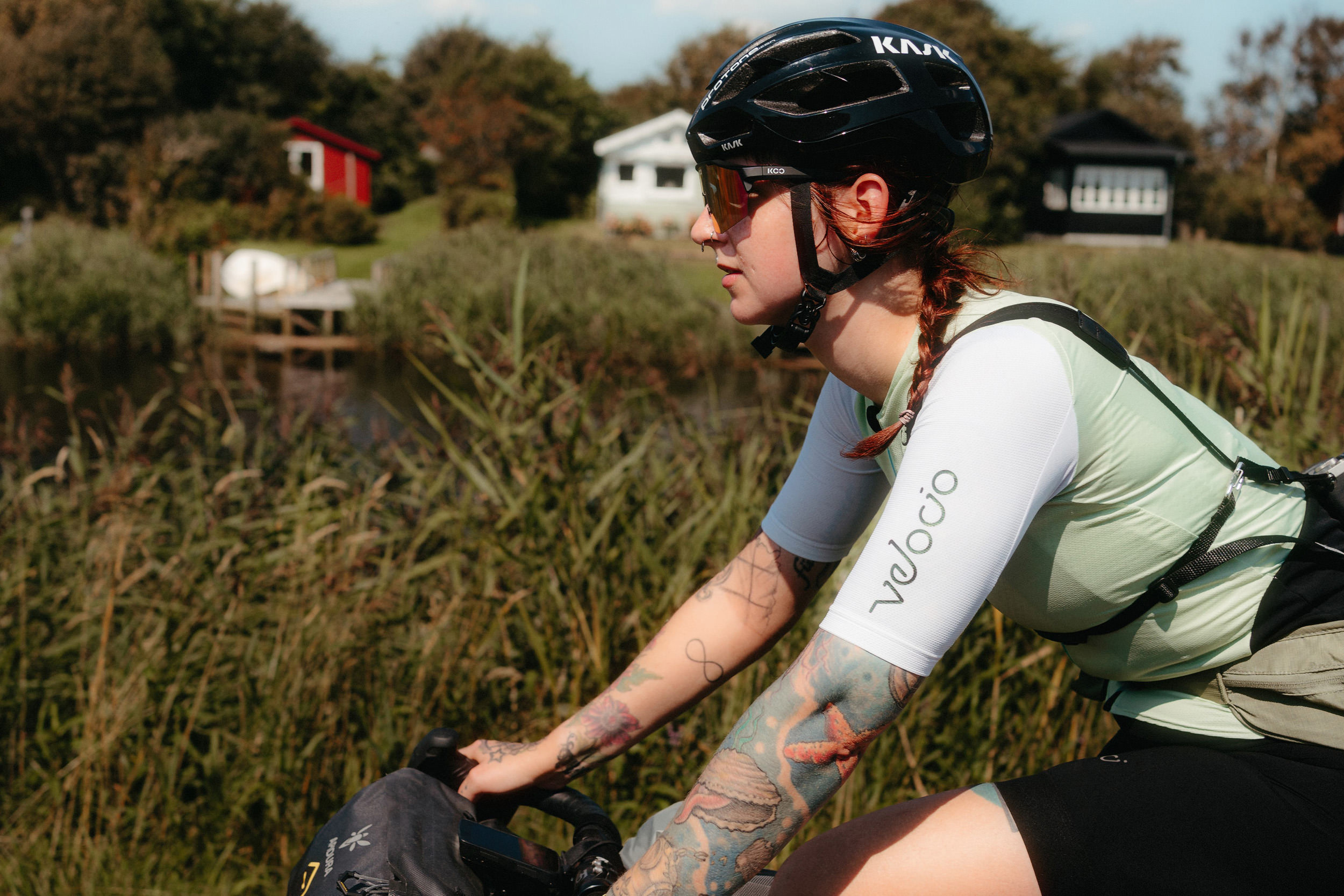
By the time we reached Esbjerg, the heat was a punishing 34 degrees, and the sun had turned our exposed skin a few shades too red. The town greeted us with a mix of modern architecture and industrial charm, a stark contrast to the endless fields we had just ridden through. We ducked into a local grocery store for a quick bite and then found some much-needed shade near the ‘Mennesket ved Havet’ (Man Meets the Sea) sculptures. Sitting there with an Alpro yogurt in hand—somehow tasting better here in Denmark than it ever does back home—I felt a strange sense of satisfaction. It’s funny how the simplest things, like yogurt after a hard ride, can bring so much joy, especially when the day has pushed you to your limits.
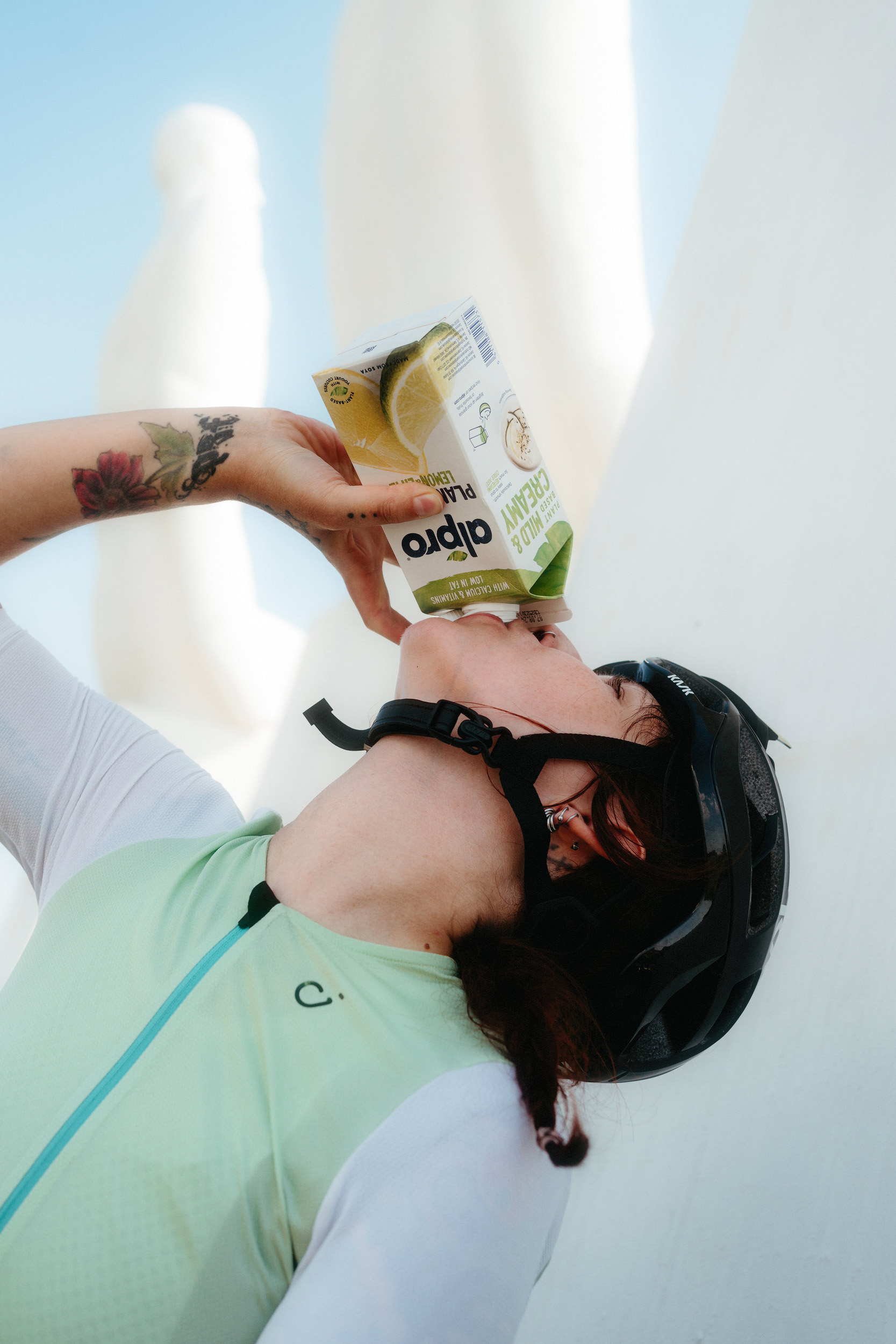
But the day still had a few surprises left. The shelter Jana had carefully picked out using the app was already occupied—by a family in the midst of a lively birthday celebration. Weekends, we quickly learned, aren’t the best time to bank on finding an empty shelter. After a few frustrating searches and a minor routing mishap (thanks to a gravel path setting we forgot to switch off), we found ourselves at a familiar spot—one that came with the unwelcome memory of a fly-infested latrine from our trip two years ago.
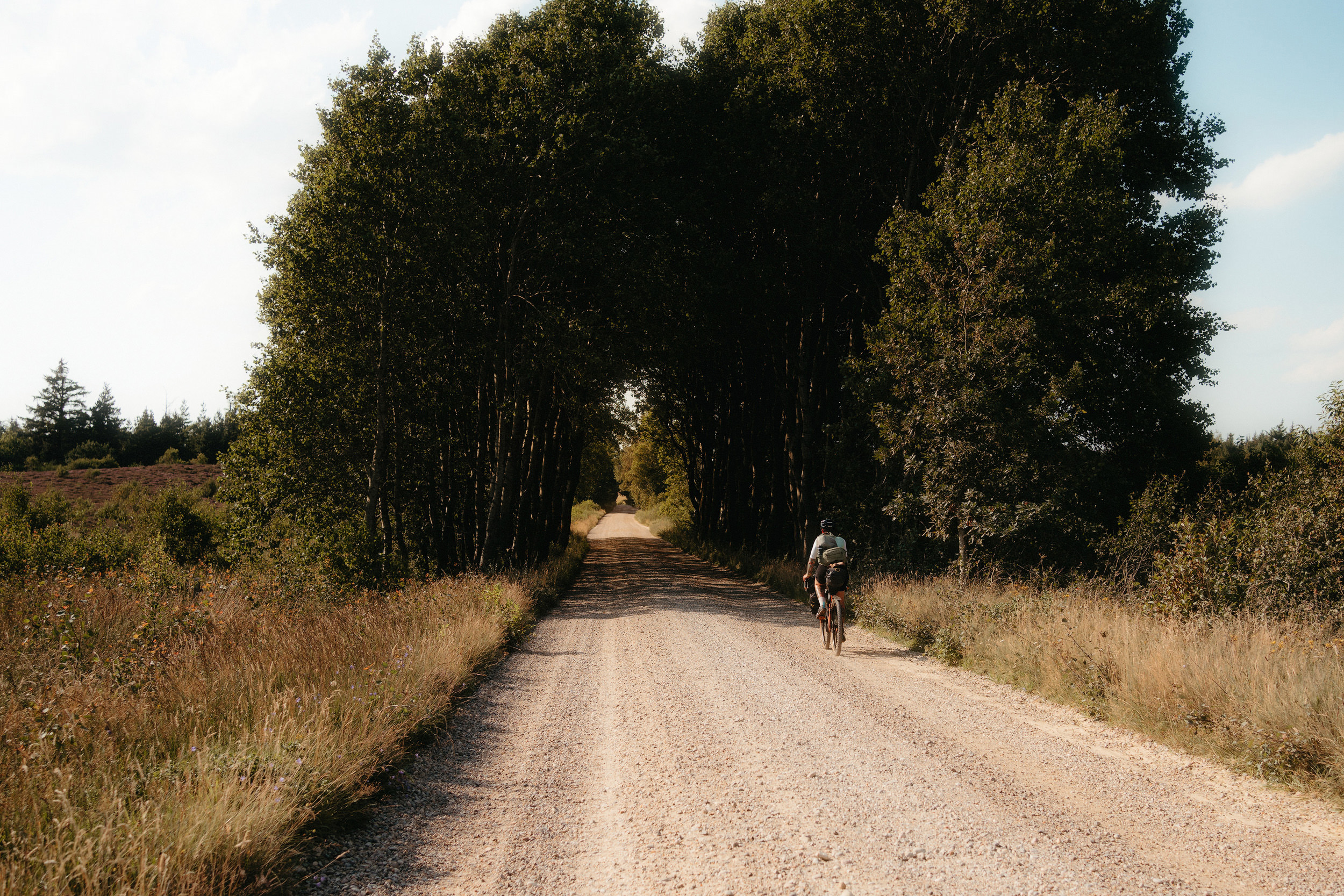
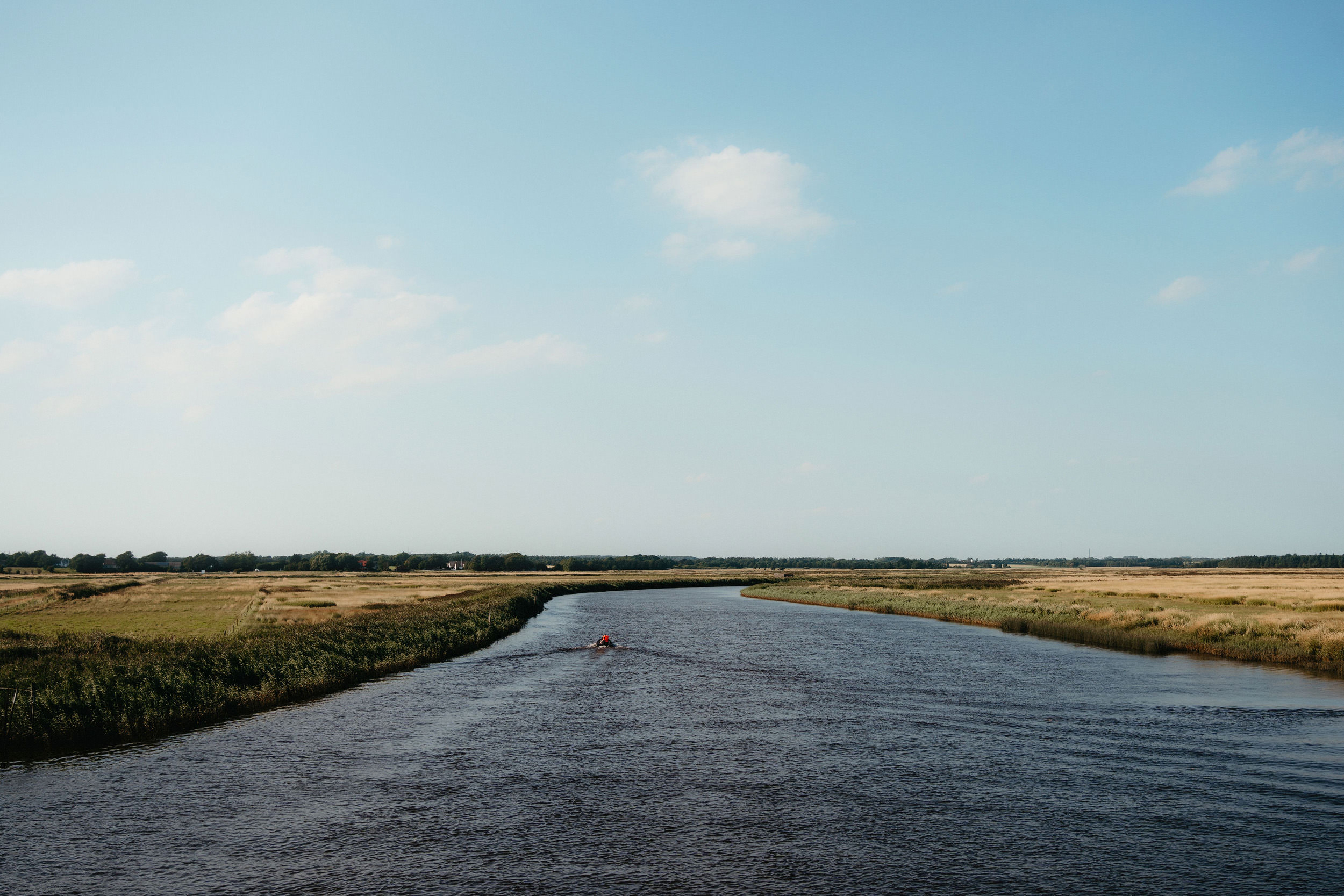
Still, the spot had its charms. Tucked away in a small forest, the shelter offered a surprising bit of seclusion from the outside world. Despite the day’s setbacks—unwanted guests included—we set up camp, cooked a simple meal of noodles, and settled in, grateful for the peace and quiet that finally found us. The familiarity of the place, even with its flaws, brought a sense of comfort, reminding us that bikepacking is as much about embracing the imperfections as it is about the adventure itself.
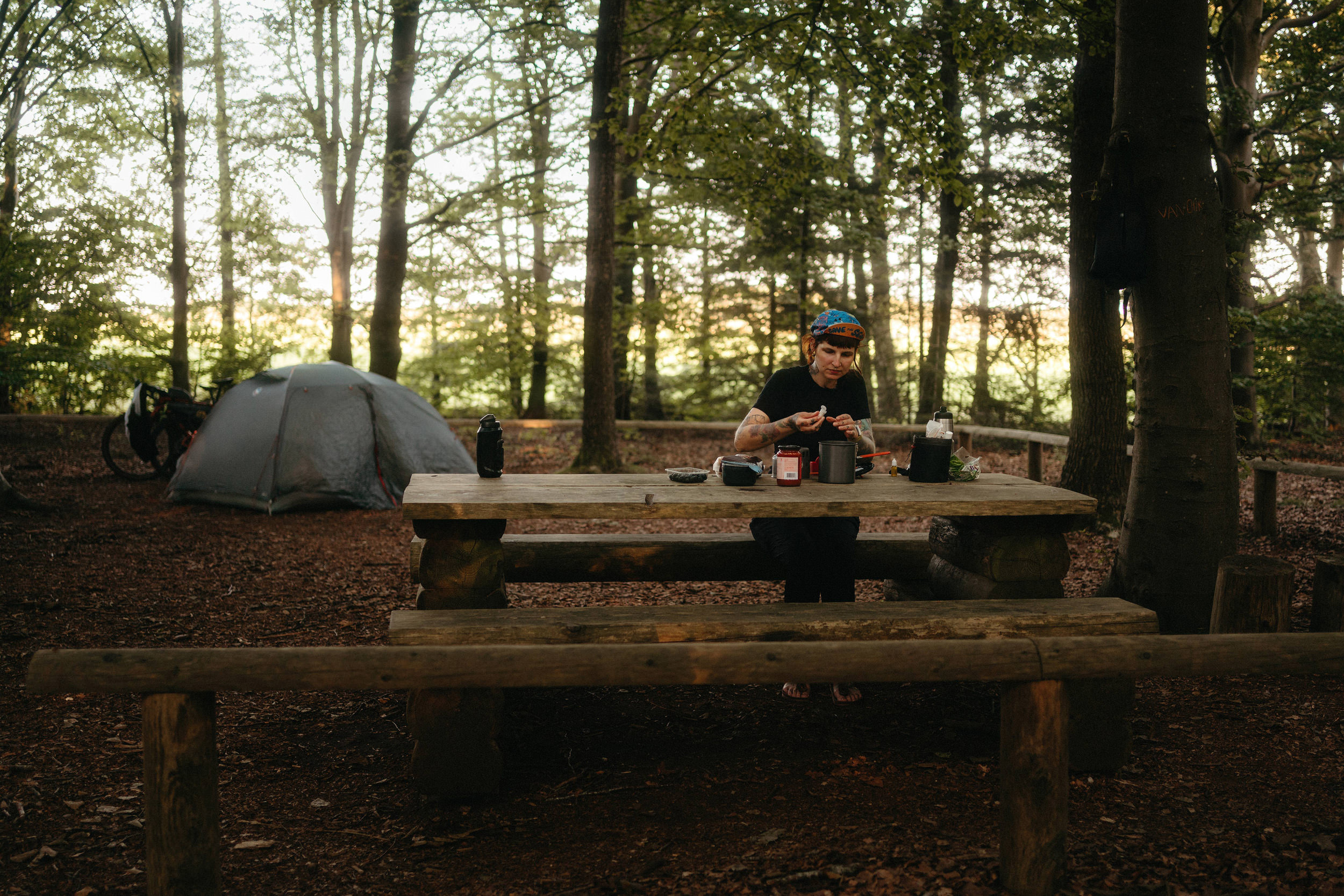
Reflections
Day 1 was a lesson in the delicate balance between planning and spontaneity. We started with a solid plan—90 kilometers, a stop in Ribe, and a shelter all lined up. But the reality of the road quickly demanded flexibility. Skipping Ribe might have felt like a compromise at first, but it set the tone for the trip: this journey would be more about flowing with the moment than sticking rigidly to a schedule.
“As much as I love planning, there’s a certain freedom in letting go of the details,” Jana said as we settled into the shelter that evening. She couldn’t have been more right. Ending up at the shelter with the fly-infested latrine wasn’t what we had in mind, but it turned out to be a peaceful spot in its own right. These unexpected moments, both the good and the not-so-good, are what make bikepacking so rewarding. You start to find beauty in the ordinary and learn to appreciate the small victories, like the taste of yogurt after a hard ride or the cool shade of a tree on a blistering day.
Another thought that struck us was the constant tension between being cyclists and photographers. As much as we wanted to capture the perfect shot, the road often had other plans. By the time we set up camp, the golden hour was slipping away, and all we could think about was food and sleep. It’s a tricky balance—wanting to document the journey, but also just wanting to live it.
“Some moments are better lived than captured,” Jana said as we watched the last light fade. Sometimes, the best memories are the ones you don’t have a photo of. In the end, Day 1 reminded us that while plans are useful, the real adventure begins when you let them go. It’s about embracing the chaos, finding joy in the unexpected, and accepting that not every moment needs to be picture-perfect to be meaningful.
Practical Tips
1. Navigating Train Travel with Bikes in Germany:
- Be Prepared for Crowds: If you're planning to take your bike on a train, especially during peak travel times, expect the bike spaces to be occupied by everything except bikes. We’ve found it helpful to politely—but firmly—ask non-cyclists to move out of the designated bike area. But don’t be surprised if a bit of creative maneuvering is still required to fit everything in.
- Travel Early: Catching an early train might increase your chances of finding space, though it’s no guarantee. An earlier start can give you some buffer time if things don’t go according to plan, but be ready to adapt.
2. Flexibility in Route Planning:
- Plan to Change Plans: Even with the best-laid routes, flexibility is key. For us, skipping Ribe wasn’t ideal, but it allowed us to reach Esbjerg sooner and better position ourselves for the next day. Keep your goals in mind, but be willing to adapt based on energy levels, weather, and unexpected delays.
- Use Local Knowledge: Apps are great, but nothing beats local insight. If you’re unsure about your route or the availability of shelters, don’t hesitate to ask locals. It can save you from a long detour or a disappointing shelter. Remember our mishap with the shelter that looked great in the app but wasn’t quite what we expected? A quick chat with a local might have saved us from that fly-infested latrine.
3. Food on the Go:
- Shop Smart and Close to Camp: Instead of carrying food throughout the day, we usually stop a few kilometers before our planned campsite to stock up on supplies. This keeps our load light and ensures we have fresh food for dinner. Jana’s advice: “Look for whole-grain products, protein sources, and fresh fruits and vegetables to cover essential vitamins and minerals.” And as I’d add with a grin, “And if you’re vegan, double-check that you’re grabbing hummus and not aioli—it happens!”
- Embrace the Simplicity: Even with fresh groceries in hand, keep meals simple and quick to prepare. After a long day on the bike, the last thing you want is a complicated dinner. Sometimes, the most satisfying meals are the simplest ones—like those noodles we whipped up at camp after a long, hot day.
4. Shelter Strategy:
- Weekends Can Be Tricky: Finding an empty shelter on a weekend can be a challenge, as we learned when we encountered a birthday party at our first choice. It’s worth having a backup plan or arriving earlier in the day if you’re shelter-hunting on a weekend.
- Don’t Judge a Shelter by Its App Description: The shelter that looked great in the app turned out to be less than ideal in person (thanks to a fly-infested latrine). If you can, scout the area before committing, or be prepared to move on if it’s not what you expected. Sometimes, what looks like a perfect spot online can be quite different in reality.
5. Photography on the Road:
- Capture the Moment, But Don’t Stress Over It: As cyclists who are also photographers, we constantly struggle with the timing of capturing the perfect shot. The best light often coincides with moments when we’re too tired to care. Remember that not every moment needs to be photographed. Sometimes, it’s better to simply enjoy the ride.
- Take Quick Snaps: If you’re too tired to set up a perfect shot, don’t hesitate to take a quick snap on your phone. It might not be gallery-worthy, but it’ll capture the memory and keep you moving. Like when we reached Esbjerg and all I wanted was food, not photos—the quick snap I took still managed to capture the essence of that moment.

